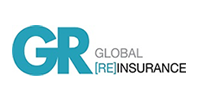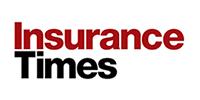Stephen Kennedy, director at Pearson Ham, discusses the key pricing differences between single trip and annual multitrip policies
The UK travel insurance market has been experiencing significant pricing shifts recently, driven by changes in consumer behaviour, travel patterns, global risk environments and evolving distribution channels.

A key distinction is also emerging between single trip and annual multitrip policies, both in terms of pricing dynamics and market demand.
Single trip policies have seen more volatile pricing trends. Prices have fluctuated due to varying demand linked to economic conditions, geopolitical tensions and the lingering aftershocks of the Covid-19 pandemic.
The cost of single trip insurance tends to reflect short-term risk assessments, with insurers factoring in specific destinations, trip durations and customer age brackets.
Notably, prices for single trip cover to destinations with higher medical costs or elevated geopolitical risks have increased sharply. There’s also a greater focus on pre-existing medical conditions, with insurers taking more conservative views.
In contrast, annual multitrip policies have shown more pricing stability. This is partially due to a more predictable risk profile – these policies are often purchased by frequent travellers, typically with a higher socioeconomic status and lower individual risk.
While premiums for multitrip cover have increased modestly, this segment remains more competitively priced on a per trip basis – especially for travellers planning more than two holidays per year.
This cost efficiency continues to attract a loyal customer base, although some insurers are tightening their terms – such as capping the number of days per trip or excluding high risk activities as standard.

Across both policy types, inflationary pressures and rising global healthcare costs are driving upward pressure on premiums.
Medical claims remain the largest driver of cost for travel insurers and countries with expensive private healthcare systems – such as the US, Caribbean islands and some parts of Asia – have seen insurers adjust pricing accordingly.
Currency fluctuations are also impacting insurers’ exposure to overseas claims payouts.
Distribution direction
The distribution of travel insurance in the UK is undergoing a transformation.
Traditional channels – such as travel agents and direct sales via insurers’ websites – remain important, but the travel market is increasingly digital.
Price comparison websites (PCWs) dominate the single trip segment as consumers seek fast, low cost solutions for one-off holidays.
Insurers are also using pricing to try to tempt consumers into purchasing annual multitrip policies. However, margin challenges are a concern on PCWs.
Annual multitrip policies are also increasingly being bundled with premium banking packages, loyalty programmes and corporate benefits schemes. This bundling strategy improves customer retention and offsets distribution costs.
Embedded insurance – where cover is included as part of the travel booking process via airline websites or online travel agencies – is also growing, particularly for short-term single trips.
In such a fast paced environment, an ongoing view of the evolving competitive landscape is crucial to succeed.












































